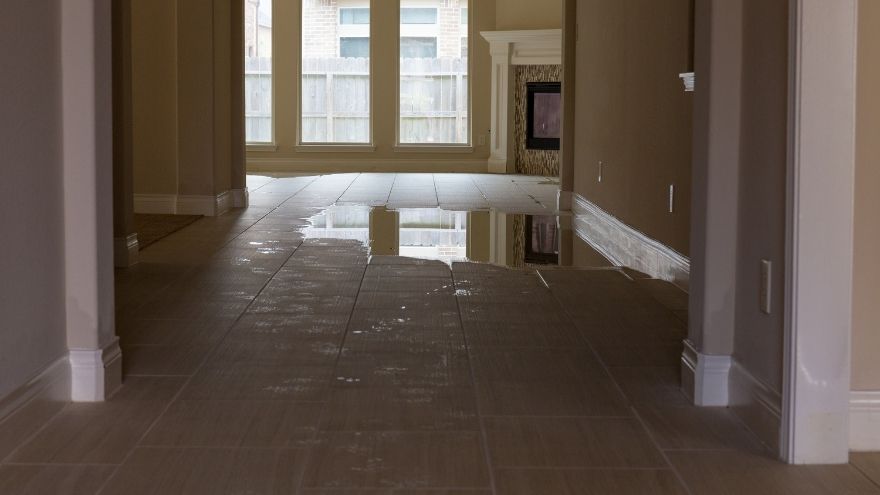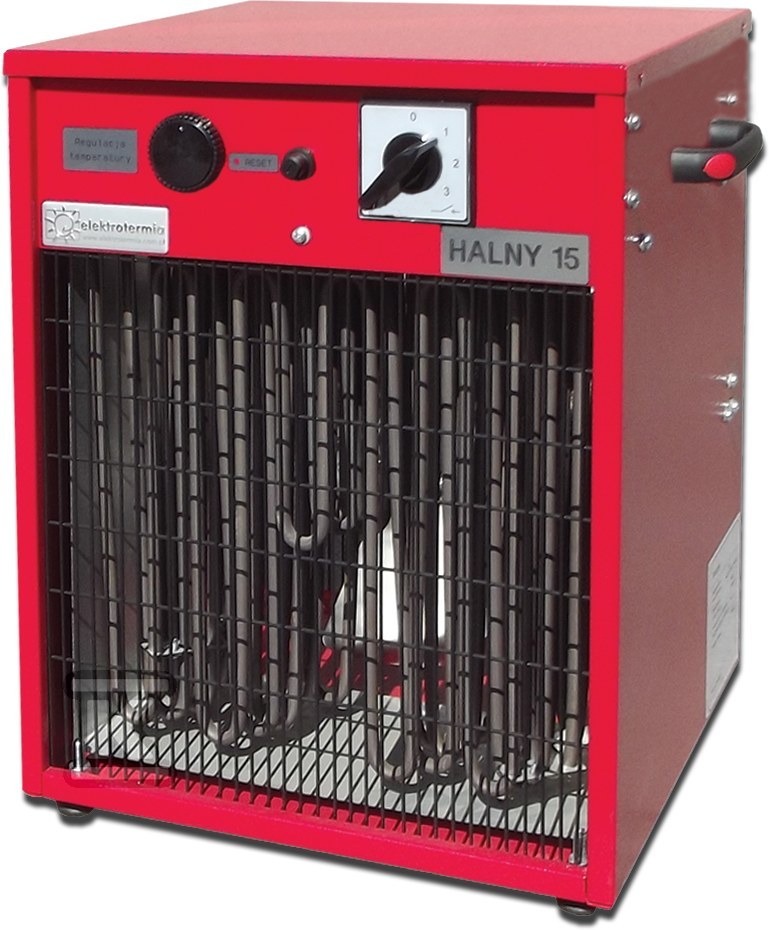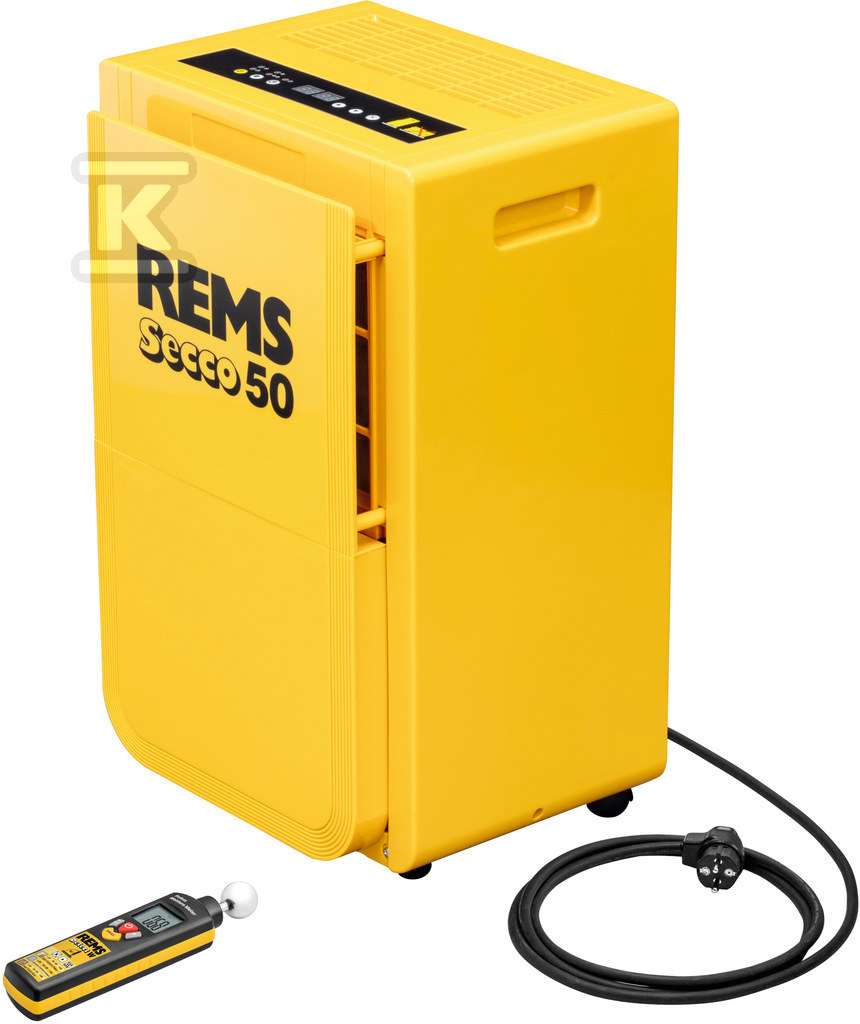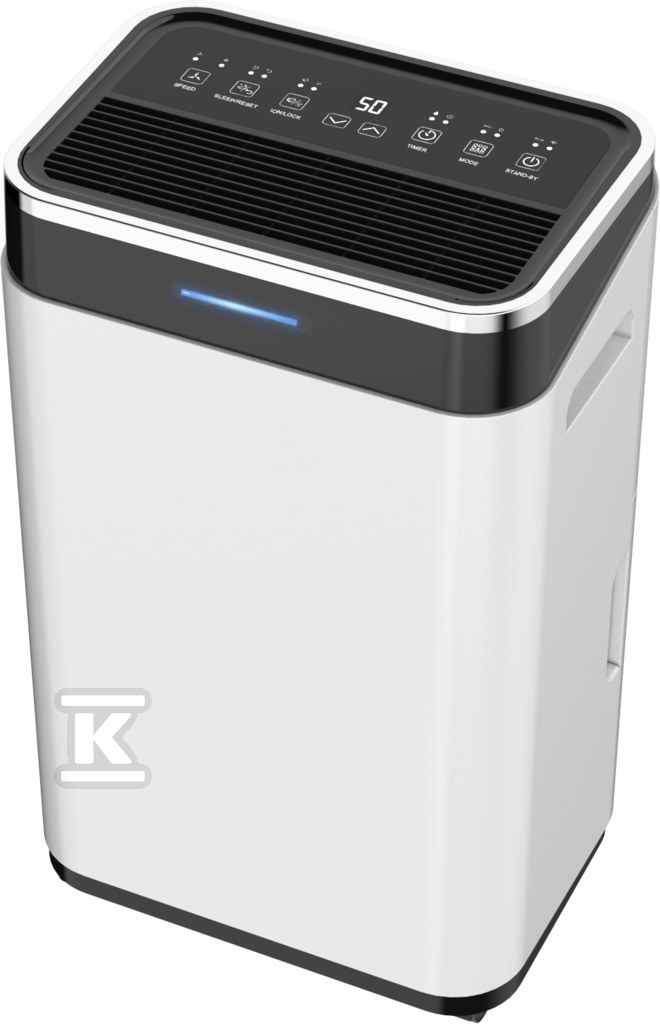Water is deadly to a building, it shortens its lifespan. When flooding occurs, serious structural damage can occur, however, excessive moisture present for a long time also has a very negative impact on its condition. In such a situation, it is necessary to take appropriate measures to dry the building. How and with what to do it effectively? In the following article, let's look at this issue, discussing what is most important. From the very beginning, from preparing the walls and masonry for drying, to choosing the right drying equipment (heaters, air dehumidifiers, portable air conditioners, fans). We encourage you to stay with us!

Check out the dehumidifiers at the Onninen wholesaler
Preparation for drying walls and walls - what to remember?
Before we reach for the equipment and the heaters and air dehumidifiers start working, we must first prepare the walls and walls for drying. This stage cannot be overlooked, as it determines the effectiveness of the entire process. First of all, we must assess the level of moisture and what causes led to the formation of moisture.
 This may be flooding, but there may also be other causes - leaks in the installation or insulation, or even condensation. During this inspection, it is also necessary to check whether moisture has a negative impact on the integrity of the building structure. However, this applies to extreme situations caused by flooding. Such an analysis must be carried out by a professional.
This may be flooding, but there may also be other causes - leaks in the installation or insulation, or even condensation. During this inspection, it is also necessary to check whether moisture has a negative impact on the integrity of the building structure. However, this applies to extreme situations caused by flooding. Such an analysis must be carried out by a professional.
An important step is to remove any materials that may impede the drying process. This is especially true for carpets, wallpaper, and furniture. It is also extremely important that the room is properly ventilated. If the moisture is coming from leaky pipes or a roof, we should first fix the source of the problem before we start drying. This will prevent further moisture build-up.
You can't forget to check the electrical system either. If the flooding is serious, it is necessary to disconnect the power to ensure safety during the work.
Drying buildings with hot air
 After proper preparation, you can start drying the building, which is where heaters come in handy. They work very effectively, removing moisture from walls and rooms. They heat the air in a closed space, which increases the ability of this device to absorb moisture. The dry air heated in this way circulates around the room, reaching the damp areas. Then the water vapor is transported outside through ventilation.
After proper preparation, you can start drying the building, which is where heaters come in handy. They work very effectively, removing moisture from walls and rooms. They heat the air in a closed space, which increases the ability of this device to absorb moisture. The dry air heated in this way circulates around the room, reaching the damp areas. Then the water vapor is transported outside through ventilation.
This method is particularly effective in large rooms, as well as in long-term dampness, especially where other methods may not work. However, remember to maintain an appropriate air flow, thanks to which the warm air will be evenly distributed. In this way, we will also eliminate the risk of overheating of materials. Without a doubt, the use of heaters is an extremely fast and effective way to dry a building. At the same time, let's remember that these devices consume a lot of electricity.
Check out the dehumidifiers at the Onninen wholesaler
Professional air dehumidifiers
Professional dehumidifiers are equally good at this. These devices suck in humid air, and then condense it. They are divided into two categories - condensing and adsorption. The first one draws in humid air, using a fan. Then it passes it through a filter, leading to the cooling system. The condensed water goes to a special tank. Finally, the dried air is heated and returned to the room.
In the adsorption model, the air from the room is transported to a rotator covered with a special hygroscopic substance, i.e. one that absorbs moisture. The water drawn in this way condenses into a tank, and the air escapes outside at an elevated temperature. Air dehumidifiers are offered for home use and for use during construction work. A home dehumidifier is enough to remove excessive moisture in small rooms. It has a compact size, consumes little energy, and is also very quiet during operation. For more advanced work, it is better to choose a construction model. It is also necessary during real problems with water, for example in the case of flooding after a flood.
Drying walls with a portable air conditioner
The previously mentioned devices, such as a heater, air dehumidifier and moisture dehumidifier , will work in the vast majority of cases where you need to remove moisture and water in a building. However, there are also other methods. An interesting solution is dehumidification with a portable air conditioner. This ensures high efficiency, especially in the case of smaller rooms.
 Portable air conditioners operate on the principle of lowering the air temperature, which causes moisture to condense. The resulting water (condensate) goes to a tank, and the dry air returns to the room. Remember, however, that air conditioners are not as efficient as professional dehumidifiers, but they can be ideal in situations with milder humidity.
Portable air conditioners operate on the principle of lowering the air temperature, which causes moisture to condense. The resulting water (condensate) goes to a tank, and the dry air returns to the room. Remember, however, that air conditioners are not as efficient as professional dehumidifiers, but they can be ideal in situations with milder humidity.
The great advantage of these devices is their small size, which ensures mobility and ease of use. They can be easily moved and placed in a lower place, where the greatest need occurs. Equally important, there is the possibility of regulating the air temperature, thanks to which the air conditioner not only dries, but also cools the room, which increases comfort during work.
Drying walls with fans
Another reliable method is to use a fan. However, this is more of a supporting method, so it is worth using it in combination with other drying techniques, using heaters or air dehumidifiers for this purpose. Fans accelerate the process of evaporation of moisture from surfaces, which is possible thanks to intensive air circulation. The rule here is simple - the faster the air flow, the better, because drying is more effective.
Although fans do not work like heaters, for example, so they do not remove moisture directly, they are very helpful, improving the efficiency of other dehumidifying devices. It is worth choosing a proven model. The Greenworks G24Fan 24V GR3501607 Fan is certainly one of them, with its compact size and low weight. Powered by a 24V battery, but also by the mains using the included 12V charger, so it will work well as both a stationary and portable fan.
Water and moisture in the building are a problem that can be dealt with. With the help of the devices mentioned in the article, these works will be fully effective.